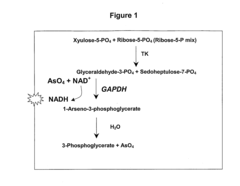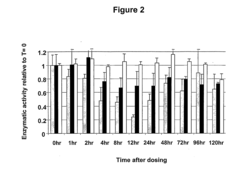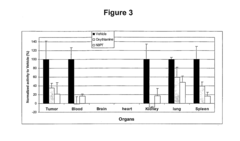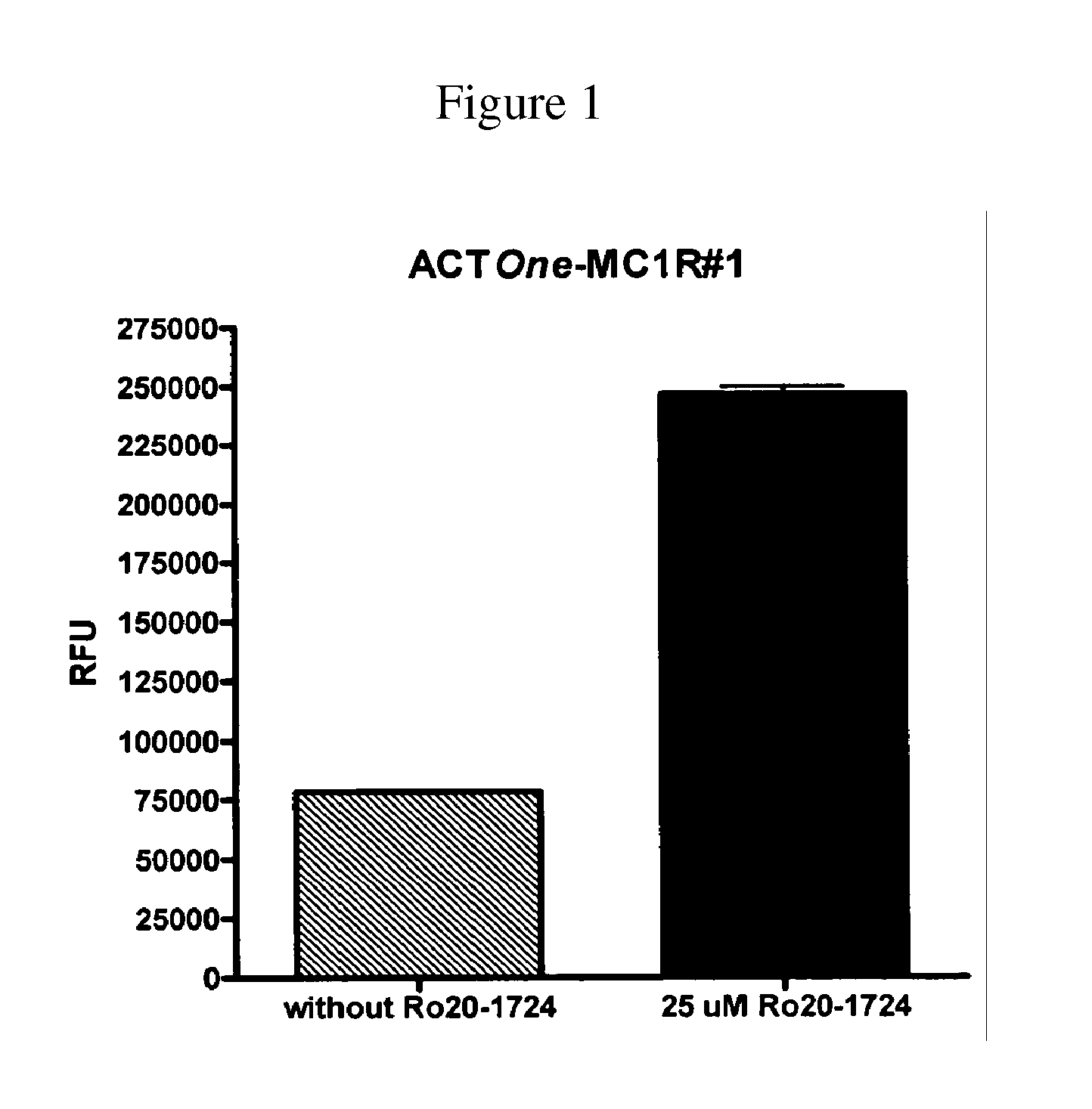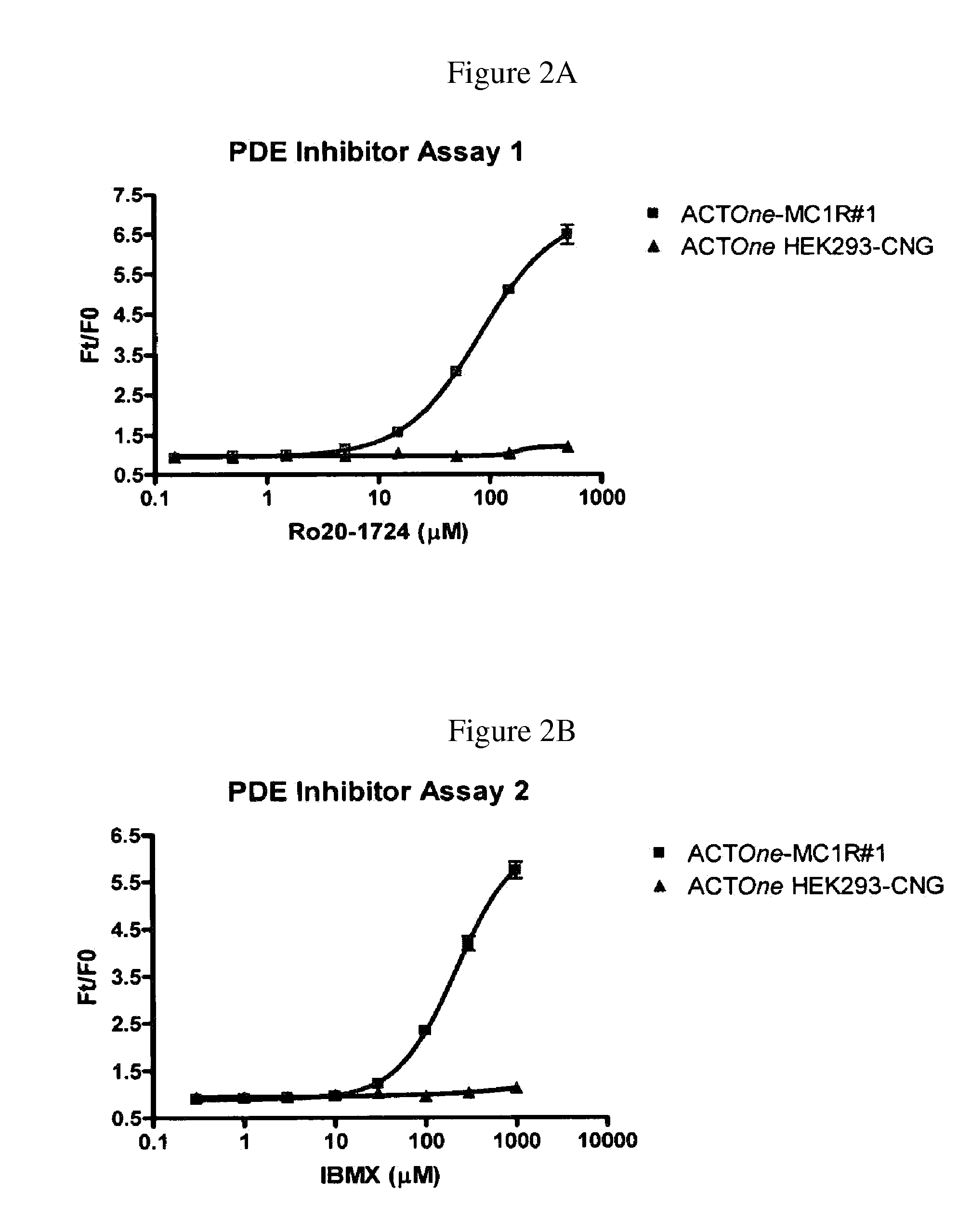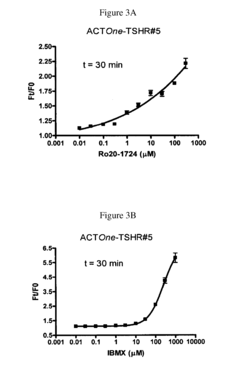Pentose Phosphate Pathway as A Sensor of Cellular Environment
Pentose Phosphate Pathway as A Cellular Environment Sensor: Research Background
The Pentose Phosphate Pathway (PPP) has long been recognized as a crucial metabolic pathway in cellular metabolism. Its primary functions include generating reducing equivalents in the form of NADPH and producing ribose-5-phosphate for nucleotide synthesis. However, recent research has unveiled a novel role for the PPP as a sensor of the cellular environment, particularly in response to oxidative stress and nutrient availability.
The concept of the PPP as a cellular sensor emerged from observations that the pathway's activity is tightly regulated in response to various environmental cues. This regulation occurs at both the transcriptional and post-translational levels, allowing cells to rapidly adjust their metabolism to changing conditions. The key enzymes of the PPP, such as glucose-6-phosphate dehydrogenase (G6PD) and 6-phosphogluconate dehydrogenase (6PGD), have been shown to be sensitive to oxidative stress and redox state changes.
One of the primary mechanisms by which the PPP acts as a sensor is through its ability to modulate the cellular NADPH/NADP+ ratio. This ratio is critical for maintaining cellular redox homeostasis and protecting against oxidative damage. When cells experience oxidative stress, the demand for NADPH increases, leading to enhanced flux through the PPP. This increased activity not only provides the necessary reducing power but also serves as a signal to activate antioxidant defense mechanisms.
Furthermore, the PPP has been implicated in sensing nutrient availability, particularly glucose levels. The pathway's first enzyme, G6PD, competes with glycolysis for glucose-6-phosphate. Under conditions of high glucose availability, increased flux through the PPP can signal a state of nutrient abundance, potentially influencing cellular decisions related to growth and proliferation.
Recent studies have also revealed intricate connections between the PPP and various signaling pathways, including those involved in cell growth, survival, and differentiation. For instance, the PPP has been shown to interact with the mTOR pathway, a master regulator of cellular metabolism and growth. This interaction suggests that the PPP may play a role in integrating metabolic information with broader cellular processes.
The emerging role of the PPP as a cellular sensor has significant implications for understanding and potentially manipulating cellular responses to environmental changes. This knowledge could be particularly valuable in the context of diseases characterized by metabolic dysregulation, such as cancer and diabetes. By elucidating the mechanisms by which the PPP senses and responds to cellular conditions, researchers may uncover new therapeutic targets and strategies for modulating cellular metabolism in disease states.
Pentose Phosphate Pathway as A Cellular Sensor: Research Background
The market demand for research on the Pentose Phosphate Pathway (PPP) as a cellular environment sensor is driven by its potential applications in various fields, particularly in healthcare, biotechnology, and pharmaceutical industries. The PPP plays a crucial role in cellular metabolism, and understanding its function as a sensor of the cellular environment can lead to significant advancements in disease diagnosis, drug development, and personalized medicine.
In the healthcare sector, there is a growing interest in utilizing the PPP as a biomarker for various diseases, including cancer, diabetes, and neurodegenerative disorders. The ability to detect alterations in the PPP can provide early indicators of cellular stress and metabolic imbalances, potentially leading to more accurate and timely diagnoses. This has created a substantial market demand for diagnostic tools and technologies that can monitor PPP activity in real-time.
The pharmaceutical industry is also showing increased interest in the PPP as a target for drug development. As the pathway is involved in cellular redox balance and the production of nucleotides, it presents opportunities for developing novel therapeutic approaches. Companies are investing in research to identify compounds that can modulate PPP activity, potentially leading to new treatments for metabolic disorders, cancer, and other diseases.
In the field of biotechnology, the PPP's role in cellular metabolism makes it an attractive target for metabolic engineering. There is a growing demand for technologies that can optimize cellular processes for the production of biofuels, chemicals, and other high-value compounds. Understanding how the PPP responds to different cellular environments can help in designing more efficient and productive microbial strains for industrial applications.
The market for PPP-related research tools and technologies is also expanding. This includes advanced analytical instruments, metabolomics platforms, and computational modeling tools that can accurately measure and predict PPP activity under various conditions. Academic institutions and research organizations are key drivers of this demand, as they seek to deepen their understanding of cellular metabolism and its implications for health and disease.
Furthermore, the increasing focus on personalized medicine has created a niche market for PPP-based diagnostic and prognostic tools. As the pathway's activity can vary among individuals and in response to different environmental factors, it offers potential for developing tailored treatment strategies and monitoring disease progression on a personalized level.
Overall, the market demand for research on the PPP as a cellular environment sensor is multifaceted and growing. It spans across multiple industries and research fields, driven by the potential for significant advancements in healthcare, drug discovery, and biotechnology. As our understanding of cellular metabolism continues to evolve, the importance of the PPP in sensing and responding to the cellular environment is likely to become even more prominent, further fueling market demand for related research and technologies.
Pentose Phosphate Pathway as A Cellular Environment Sensor: Research Challenges
The Pentose Phosphate Pathway (PPP) faces several challenges in its role as a sensor of the cellular environment. One of the primary obstacles is the complexity of the pathway itself, which involves multiple enzymes and intermediates. This intricate network makes it difficult to isolate and measure specific components without disrupting the overall system. Researchers struggle to develop non-invasive techniques that can accurately monitor PPP activity in real-time without altering cellular metabolism.
Another significant challenge is the dynamic nature of cellular metabolism. The PPP is interconnected with various other metabolic pathways, and its activity can fluctuate rapidly in response to changing environmental conditions. This interconnectedness makes it challenging to attribute observed changes solely to PPP activity, as other pathways may influence or compensate for alterations in the PPP.
The sensitivity and specificity of current detection methods also pose a considerable hurdle. Many existing techniques lack the resolution to detect subtle changes in PPP activity, which can be crucial for understanding its role as an environmental sensor. Additionally, the metabolites involved in the PPP are often present in low concentrations, further complicating their accurate measurement.
Cellular heterogeneity presents another obstacle in PPP sensing. Even within a seemingly homogeneous population of cells, individual cells may exhibit varying levels of PPP activity due to differences in their microenvironment or metabolic state. This heterogeneity makes it challenging to obtain representative data and draw meaningful conclusions about the overall cellular response to environmental stimuli.
The temporal aspects of PPP sensing also present difficulties. The pathway's response to environmental changes can occur on different timescales, from rapid fluctuations to long-term adaptations. Capturing these diverse temporal dynamics requires sophisticated experimental designs and data analysis techniques that can account for both immediate and delayed responses.
Furthermore, the PPP's dual role in providing reducing power (NADPH) and ribose-5-phosphate for nucleotide synthesis complicates the interpretation of its activity as an environmental sensor. Changes in PPP flux may reflect alterations in cellular redox state, biosynthetic demands, or both, making it challenging to decipher the specific environmental cues being sensed.
Lastly, the translation of in vitro findings to in vivo systems remains a significant challenge. The behavior of the PPP in controlled laboratory conditions may not accurately reflect its function in complex living organisms, where multiple factors can influence its activity simultaneously. Developing models and experimental approaches that bridge this gap is crucial for advancing our understanding of the PPP as a cellular environment sensor.
Pentose Phosphate Pathway as A Cellular Environment Sensor: Current Solutions
01 Metabolic sensing through the pentose phosphate pathway
The pentose phosphate pathway plays a crucial role in cellular environment sensing by regulating metabolic processes. This pathway is involved in generating NADPH and ribose-5-phosphate, which are essential for various cellular functions. By monitoring the flux through this pathway, cells can sense changes in their metabolic state and respond accordingly.- Metabolic sensing through the pentose phosphate pathway: The pentose phosphate pathway plays a crucial role in cellular environment sensing by monitoring metabolic changes. This pathway is involved in generating NADPH and pentoses, which are essential for various cellular processes. By sensing changes in metabolite levels, cells can adapt to different environmental conditions and regulate their metabolism accordingly.
- Genetic modifications to enhance pentose phosphate pathway sensing: Genetic engineering techniques can be used to modify enzymes involved in the pentose phosphate pathway to enhance cellular environment sensing capabilities. These modifications can improve the pathway's sensitivity to specific metabolites or environmental cues, allowing for more precise control of cellular responses to changing conditions.
- Integration of pentose phosphate pathway with other signaling networks: The pentose phosphate pathway interacts with other cellular signaling networks to provide a comprehensive view of the cellular environment. This integration allows for more sophisticated sensing and response mechanisms, enabling cells to adapt to complex environmental changes and maintain homeostasis.
- Utilization of pentose phosphate pathway in biosensors: The pentose phosphate pathway can be exploited in the development of biosensors for detecting specific environmental conditions or metabolites. By engineering cells or enzymes from this pathway, researchers can create sensitive and specific biosensors for various applications in biotechnology and environmental monitoring.
- Therapeutic applications targeting pentose phosphate pathway sensing: Understanding and manipulating the pentose phosphate pathway's role in cellular environment sensing can lead to novel therapeutic approaches. By targeting specific enzymes or metabolites in this pathway, it may be possible to modulate cellular responses to environmental stresses or metabolic disorders, opening up new avenues for treatment.
02 Genetic modifications to enhance pentose phosphate pathway sensing
Genetic engineering techniques can be used to modify enzymes involved in the pentose phosphate pathway to enhance cellular environment sensing capabilities. These modifications may include altering gene expression levels or creating mutant enzymes with improved sensing properties, allowing cells to better detect and respond to environmental changes.Expand Specific Solutions03 Integration of pentose phosphate pathway with other signaling pathways
The pentose phosphate pathway interacts with other cellular signaling pathways to provide a comprehensive view of the cellular environment. This integration allows for more accurate sensing and response to various environmental stimuli, including nutrient availability, oxidative stress, and energy status.Expand Specific Solutions04 Utilization of pentose phosphate pathway metabolites as environmental sensors
Metabolites produced or consumed in the pentose phosphate pathway can serve as indicators of the cellular environment. By monitoring the levels of these metabolites, cells can gain information about their surroundings and adjust their metabolism accordingly. This approach can be used to develop biosensors for various applications in biotechnology and medicine.Expand Specific Solutions05 Application of pentose phosphate pathway sensing in disease diagnosis and treatment
The pentose phosphate pathway's role in cellular environment sensing can be exploited for disease diagnosis and treatment. By analyzing the pathway's activity and metabolite levels, it may be possible to detect metabolic disorders, cancer, and other diseases. This information can also be used to develop targeted therapies that modulate the pathway's activity.Expand Specific Solutions
Key Players in Research on Pentose Phosphate Pathway as A Cellular Environment Sensor
The research on the Pentose Phosphate Pathway as a cellular environment sensor is in a developing stage, with growing market potential due to its implications in metabolic diseases and cancer. The technology's maturity is advancing, as evidenced by the involvement of diverse players. Major pharmaceutical companies like GlaxoSmithKline and Ono Pharmaceutical are investing in this field, alongside academic institutions such as Harvard College and the University of California. Biotechnology firms like Illumina and Agilent Technologies are contributing to technological advancements. The presence of global research institutes and universities indicates a broad international interest, suggesting a competitive landscape with opportunities for collaborative research and commercial applications.
Glaxo Group Ltd.
Illumina, Inc.
Pentose Phosphate Pathway as A Cellular Environment Sensor: Innovations
- A fluorescence-based assay that measures the enzymatic activities of these enzymes in cell lysates, tissues, and blood, providing increased sensitivity and convenience by eliminating the need for enzyme isolation and reducing sample manipulation, allowing for high-throughput analysis.
- Genetically modified cells expressing cyclic nucleotide-gated channels and exogenously provided proteins that increase basal cyclic nucleotide production, allowing for the detection of PDE modulating compounds without external stimulation, using intracellular indicators that generate optical signals indicative of cyclic nucleotide levels.
Metabolic Regulation
The Pentose Phosphate Pathway (PPP) plays a crucial role in cellular metabolism, serving as a key sensor of the cellular environment. This pathway is intricately regulated to maintain metabolic homeostasis and respond to various environmental stimuli. The regulation of PPP is primarily achieved through allosteric modulation of key enzymes and transcriptional control of enzyme expression.
One of the primary regulatory mechanisms of PPP involves the modulation of glucose-6-phosphate dehydrogenase (G6PD), the rate-limiting enzyme of the oxidative branch. G6PD activity is allosterically inhibited by NADPH, the primary product of the pathway. This feedback inhibition ensures that PPP activity is tightly coupled to the cellular redox state and NADPH demand.
The non-oxidative branch of PPP is regulated by the availability of substrates and the activity of transketolase and transaldolase enzymes. These enzymes are subject to post-translational modifications, such as phosphorylation, which can alter their activity in response to cellular signaling cascades.
Transcriptional regulation of PPP enzymes is another important aspect of metabolic control. The expression of PPP genes is modulated by various transcription factors, including Nrf2, which responds to oxidative stress, and ChREBP, which is activated by high glucose levels. These transcriptional regulators ensure that PPP enzyme levels are adjusted according to cellular needs.
The integration of PPP with other metabolic pathways is critical for its regulatory function. For instance, the interplay between PPP and glycolysis is mediated by the levels of fructose-6-phosphate and glyceraldehyde-3-phosphate, which can be shuttled between the two pathways. This crosstalk allows for fine-tuning of carbon flux based on cellular energy and biosynthetic requirements.
Recent research has revealed that PPP regulation is also influenced by post-translational modifications of its enzymes. For example, acetylation of G6PD has been shown to modulate its activity, providing an additional layer of control that responds to the cellular metabolic state.
The spatial organization of PPP enzymes within the cell has emerged as an important regulatory mechanism. Enzyme clustering and compartmentalization can enhance pathway efficiency and allow for localized regulation in response to specific cellular needs or environmental cues.
Understanding the complex regulation of PPP is crucial for developing strategies to modulate cellular metabolism in various contexts, including cancer therapy and metabolic disorders. Future research in this area may focus on elucidating the interplay between different regulatory mechanisms and exploring how PPP regulation can be leveraged for therapeutic interventions.
Biomarker Development
The development of biomarkers based on the Pentose Phosphate Pathway (PPP) as a sensor of cellular environment presents a promising avenue for advancing diagnostic and therapeutic approaches. The PPP, a metabolic pathway parallel to glycolysis, plays a crucial role in maintaining cellular redox balance and providing precursors for nucleotide synthesis. Its sensitivity to changes in the cellular environment makes it an ideal candidate for biomarker development.
One potential biomarker derived from the PPP is the ratio of NADPH to NADP+. This ratio reflects the cell's redox state and can indicate oxidative stress levels. Elevated NADPH/NADP+ ratios may signify increased PPP activity, often associated with cancer cells' heightened metabolic demands. Conversely, a decreased ratio might indicate impaired PPP function, potentially linked to neurodegenerative disorders or diabetes.
Another promising biomarker is the activity of glucose-6-phosphate dehydrogenase (G6PD), the rate-limiting enzyme of the PPP. G6PD activity can be measured in blood samples and serves as an indicator of PPP flux. Alterations in G6PD activity have been associated with various pathological conditions, including hemolytic anemia and certain types of cancer.
The levels of PPP intermediates, such as ribose-5-phosphate and sedoheptulose-7-phosphate, can also serve as potential biomarkers. These metabolites can be quantified using mass spectrometry-based metabolomics approaches. Elevated levels of these intermediates may indicate increased nucleotide synthesis, a hallmark of rapidly proliferating cells in cancer.
Furthermore, the expression levels of key PPP enzymes, such as transketolase and transaldolase, can be utilized as biomarkers. These enzymes can be detected through immunohistochemistry or quantified using RT-PCR in tissue samples. Altered expression patterns of these enzymes have been observed in various cancers and metabolic disorders.
The development of these biomarkers requires rigorous validation studies to establish their specificity and sensitivity. This involves large-scale clinical trials across diverse patient populations to determine the biomarkers' reliability in different physiological and pathological contexts. Additionally, standardization of measurement techniques and establishment of reference ranges are crucial steps in biomarker development.
Integrating PPP-based biomarkers with other established markers can enhance diagnostic accuracy and provide a more comprehensive understanding of cellular metabolism. This multi-marker approach may lead to improved early detection methods, more precise disease monitoring, and personalized treatment strategies across various medical fields.

